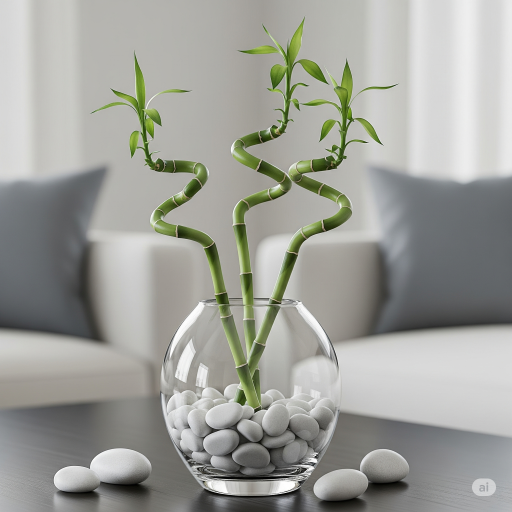Description
Fake desk plants, also known as artificial or faux plants, are non-living replicas designed to mimic the aesthetic of natural greenery. They are a common feature in modern office and commercial interiors, particularly for desks, shelves, and cubicles where light is poor and maintenance is impractical.
Designs and Materials
The quality and design of fake desk plants have improved significantly, moving beyond cheap plastic to realistic, durable materials:
-
Materials:
-
Silk: Often used for flowering plants and fine leaves, offering a soft texture and realistic appearance.
-
Plastics (Polyethylene/PVC): Most common material, now engineered with high-quality molds to replicate realistic texture, vein patterns, and color gradients. High-grade plastics are UV-resistant (though less critical indoors).
-
Resin/Fiberglass: Used for stems, trunks, and base planters to give weight and stability.
-
-
Design Styles:
-
Replicas of “Indestructibles”: The most popular designs mimic hardy, architectural plants like the Snake Plant (Sansevieria), ZZ Plant (Zamioculcas zamiifolia), and various Succulents and Cacti.
-
Flowering Accents: Designs of orchids or small potted flowers are popular for adding controlled pops of color without the need for light or watering.
-
Foliage: Replicas of Pothos, small Monsteras, or Rubber Plants offer dense, lush greenery for a biophilic touch.
-
Advantages of Fake Desk Plants
The core benefits of using faux plants relate directly to convenience and operational ease:
-
Zero Maintenance: They require no watering, pruning, feeding, or special lighting. This eliminates operational costs and the risk of neglect, which is ideal for busy Nairobi offices without dedicated plant care staff.
-
Durability and Longevity: They do not wilt, fade, or die, offering a guaranteed vibrant appearance 365 days a year. They are immune to pests and disease.
-
Placement Versatility: They can be placed in extremely low-light areas (hallways, back corners, windowless offices) where no live plant could survive, ensuring every corner benefits from greenery.
-
Hypoallergenic: They pose no allergy risk to employees, making them a safe choice for all workspaces.
Disadvantages of Fake Desk Plants
While convenient, faux plants come with significant drawbacks, particularly in a biophilic context:
-
No Health or Air Quality Benefits: This is the biggest limitation. They offer no air purification (no VOC filtration) and provide none of the physiological benefits (stress reduction, blood pressure lowering) scientifically linked to living organisms.
-
Accumulation of Dust: They require periodic cleaning to prevent dust buildup, which can make them look visibly “fake” and counterintuitive to air quality goals.
-
Aesthetic Degradation: Low-quality plants can look obviously artificial, detracting from the professionalism of an office space. Even high-quality ones can look static and lifeless over time.
-
Environmental Impact: Most are made from non-biodegradable plastics and resins, posing a long-term environmental challenge when they are eventually discarded.
The decision to use fake plants often balances the operational convenience against the lost holistic health benefits of their living counterparts.

